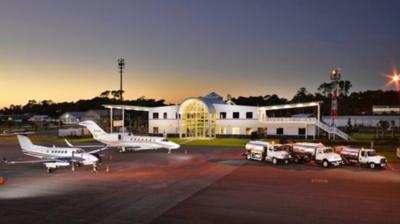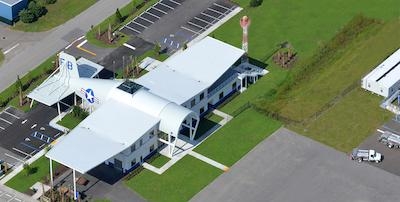Mon, Apr 22, 2024
KFNB Looks to Automated Fees to Discourage Touch and Go Landings
The Fernandina Beach Florida Municipal Airport (FNB) is currently considering implementing an automated aircraft landing fee system proposed by Airport Director Sam Carver. This initiative, aimed at generating additional revenue, is primarily focused on funding essential maintenance projects, including a $4 million runway refurbishment scheduled for next year.

During a recent Airport Advisory Commission meeting, representatives from Vector Airport Systems detailed their PlanePass program. This system utilizes aircraft tracking technologies to identify and bill aircraft landings, excluding local pilots who hangar their planes at the airport. Vector's program, which operates in over 60 regional airports across the U.S., records the tail numbers of aircraft, automatically excluding local aircraft from billing, and processes payments which are then distributed between the airport and Vector Airport Systems.
The motivation behind the landing fees is not only to bolster airport revenues but also to manage and reduce the impact of noise from flight school operations, particularly those involving repetitive touch-and-go landings. This practice has been a point of contention among local residents who have raised concerns about noise affecting their communities (despite the fact that the airport was there long before many, if not all, of them). The fees would potentially discourage such activities by imposing a cost per landing, which could lead to flight schools relocating these exercises to other locations.

Sam Carver emphasized that the proposed anti-GA fees align with FAA regulations, which allow for the collection of landing fees as long as they apply uniformly to all users and contribute to the airport's financial sustainability. He also highlighted that many airports across Florida and the nation successfully use similar programs without compromising safety or operations.
However, the proposal has faced some understandable opposition. Concerns were raised about potential safety risks if pilots choose to circumvent the fees by disabling tracking systems or avoiding communication in uncontrolled airspace. Additionally, there is apprehension that implementing such fees might tarnish the airport's reputation and deter pilots from using the facility.
The final decision on implementing the landing fee system will be influenced by further discussions within the Airport Advisory Commission and feedback from the local aviation community. As the airport navigates these considerations, the overarching goal allegedly remains to ensure the facility's financial health and operational effectiveness without overly burdening local taxpayers.
More News
From 2017 (YouTube Edition): ADS-B For Airplanes And Drones… ADS-B technology developed by uAvionix has come full circle. The company began with a device developed for manne>[...]
Dead Reckoning Dead reckoning, as applied to flying, is the navigation of an airplane solely by means of computations based on airspeed, course, heading, wind direction, and speed,>[...]
"The next great technological revolution in aviation is here. The United States will lead the way, and doing so will cement America’s status as a global leader in transportat>[...]
Aero Linx: The Mooney Mite Site Dedicated to the Mooney M-18 Mite, "The Most Personal Airplane," and to supporting Mite owners everywhere. The Mooney M-18 Mite is a single-place, l>[...]
Also: Space Command Moves, Alpine Eagle, Duffy Names Amit Kshatriya, Sikorsky-CAL FIRE Collab Textron eAviation is putting the development of its Nexus electric vertical takeoff an>[...]
 Classic Aero-TV: UAvionix - Transitioning Between Manned & Unmanned Technologies
Classic Aero-TV: UAvionix - Transitioning Between Manned & Unmanned Technologies ANN's Daily Aero-Term (09.14.25): Dead Reckoning
ANN's Daily Aero-Term (09.14.25): Dead Reckoning Aero-News: Quote of the Day (09.14.25)
Aero-News: Quote of the Day (09.14.25) ANN's Daily Aero-Linx (09.14.25)
ANN's Daily Aero-Linx (09.14.25) Airborne-NextGen 09.09.25: Textron Nixes ePlane, Joby L/D Flt, Swift Approval
Airborne-NextGen 09.09.25: Textron Nixes ePlane, Joby L/D Flt, Swift Approval




